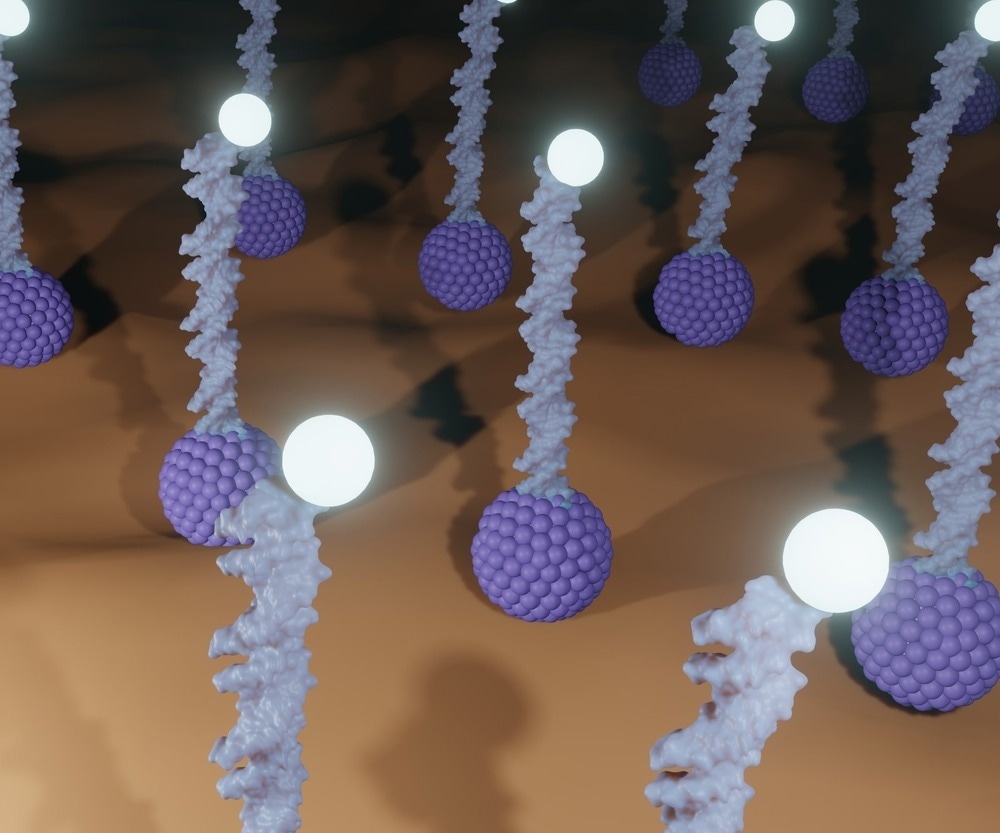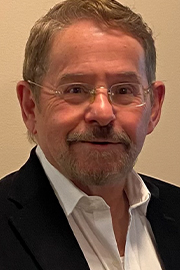In this interview conducted at Pittcon 2023 in Philadelphia, Pennsylvania, we spoke to 2023’s recipient of the Ralph N. Adams Award in Analytical Chemistry, Professor Joseph Wang, about the versatility and future directions of biosensor technologies.
Could you introduce yourself and your current research activities?
My name is Joseph Wang, and I am a Nanoengineering Professor at UC San Diego, focusing on developing wearable sensors and microscale robots for biomedical applications.
I am currently designing wearable electrochemical sensors for all types of applications, such as point-of-care and self-testing. I am focused on a portable, smaller device for clinical diagnostics, security, wellness, etc.
How did you become involved with this research field?
When I started in the 80s, nanotechnology did not exist, and wearable sensors were not a thing.
My primary training is in analytical chemistry. I graduated from the Technion in Israel and decided to come to the States to pursue my academic career. In my research like to move in new directions, addressing emerging societal needs in medicine, security, or climate change and creating new frontiers and capabilities.
What are some disadvantages associated with classical diagnostic methods?
Classical diagnostic methods tend to be better suited for on-the-spot blood measurement. This form of method is conducted periodically, such as twice a year, and it gives you a single measurement. However, some circumstances require biochemical information to be monitored as it fluctuates, such as diabetics.
In diabetics, we have what we call CGM, Continuous Glucose Monitor, which monitors glucose fluctuation. This type of fluctuation must also be monitored for cardiac, stress, wellness, and nutrition.
Measuring blood monthly or quarterly is an insufficient method, as you are unable to get an idea of the overall picture and identify any trends. This is not only the case in medicine, but also in fitness; you want to continuously monitor your hydration or lactate – all of which fluctuate.
There are a lot of temporal variations in kidney and cardiac diseases. Thus, taking just one measurement will not provide useful information.

Image Credit: Love Employee/Shutterstock.com
Why are electrochemical sensors so exciting for these applications?
If you look at the glucose market, it is dominated by electrochemical devices. The beauty of an electrochemical sensor is that it is a small, compact, portable device that is easy to mass produce with a low power requirement, making them very attractive technologies.
For instance, the finger stick blood test, a mobile self-testing or wearable device, relies on electrochemistry because of these unique properties.
Could you give some examples of the target molecules that these sensors might be able to detect?
We are creating wearable alcohol or opioid sensors to help prevent drunk driving or drug abuse. A sensor that can monitor cortisol levels would also be highly advantageous when it comes to determining stress levels. Other useful targets would be vitamins to aid in monitoring personal nutrition.
We are also hoping to develop a sensor to help identify trace elements and minerals in food supplements. Nerve agents for monitoring the body’s surroundings – such as electrolytes, metabolites, and hormones – are other viable targets.
Are there any challenges that need to be addressed before using these sensors?
The beauty of these sensors is that they are non-invasive, as you do not need to physically take a sample of blood. However, everything needs to be validated by comparing to blood, which is the gold standard, so we must also validate without controlled conditions. Other challenges include changes in the surrounding temperature, e.g., when running around in the summer compared to in winter. Common bioreceptor, such as enzymes are not so stable in uncontrolled extreme conditions.
There is also the issue of bio-fouling. In terms of mobility, it is easy to measure your steps, calories, or ECG artery as these are physical characteristics. However, when it comes to chemical sensing, you need a bioreceptor, and you need to immobilize it to make it stable. This is why we do not have many of these except glucose.
Congratulations on receiving 2023’s Ralph N. Adams Award in analytical chemistry. What does it mean to be the recipient of this award?
It is a great honor to have been presented with this award, especially as I knew Ralph Adam personally. Ralph Adam passed away in 2002; he was a fantastic scientist and, more importantly, a wonderful person. He had a vision and shared my idea to make receptors simple but creative.
He was the first to put electrodes in the brain of small animals and gain insight into the neurochemicals of the brain. This was back in the 70s. At present, I am now putting electrodes in the skin. The progression in this field is astounding, but it would not have been possible without great scientists like Ralph.
Biosensor Versatility; From Analytical Chemistry to Diagnostics - Joseph Wang at Pittcon 2023
Video Credit: Pittcon
What are you working on right now that you are particularly excited about?
My team comprises 40 people at UC San Diego, and there are also two subgroups. One group focuses on the wearable sensor, and the other focuses on the microrobot nanomachine. The latter is a device that swims around the body to deliver drugs.
Wearable technology is relatively new in the field of chemical sensing, and we, as a team, are pioneering the “lab on the skin.” It is really exciting to be able to carry out chemistry on the skin, the mouth, contact lenses, and under the skin with what we call a microneedle. Any biofluid, such as sweat, saliva, tears, and interstitial fluid (IF), is applied using a microneedle platform. Some examples include a tattoo on the skin, a mouth guard in the mouth, and contact lenses in the eyes.
Why is it so important for researchers and individuals to meet in person at events like Pittcon?
As a result of the COVID-19 pandemic, we have missed out on the last two years on in-person events. Last year, I was awarded the prestigious Talanta medal, but this was a virtual event, so I missed out on the direct interaction that you can have with researchers, colleagues, and young students who were in attendance.
However, at Pittcon 2023, I was lucky enough to have been selected to present a session in person. It was fantastic to once again have the opportunity to meet with colleagues face-to-face after several long months of using Zoom.
About Prof. Joseph Wang
 Joseph Wang is Distinguished Professor, SAIC Endowed Chair, and former Chair of the Department of Nanoengineering at University of California, San Diego (UCSD). He is also the Director of the UCSD Center of Wearable Sensors and Co-Director of the UCSD Center of Mobile Health Systems and Applications (CMSA). He served as the director of Center for Bioelectronics and Biosensors of Arizona State University (ASU) before joining UCSD. His scientific interests are concentrated in the areas of bioelectronics, wearable devices, biosensors, bionanotechnology, nanomachines and microrobots, flexible materials, and electroanalytical chemistry. Prof. Wang has published more than 1200 papers, 11 books and he holds 30 patents (H Index=194, >150,000 citations).
Joseph Wang is Distinguished Professor, SAIC Endowed Chair, and former Chair of the Department of Nanoengineering at University of California, San Diego (UCSD). He is also the Director of the UCSD Center of Wearable Sensors and Co-Director of the UCSD Center of Mobile Health Systems and Applications (CMSA). He served as the director of Center for Bioelectronics and Biosensors of Arizona State University (ASU) before joining UCSD. His scientific interests are concentrated in the areas of bioelectronics, wearable devices, biosensors, bionanotechnology, nanomachines and microrobots, flexible materials, and electroanalytical chemistry. Prof. Wang has published more than 1200 papers, 11 books and he holds 30 patents (H Index=194, >150,000 citations).
Wang is a member of the US National Academy of Inventors and Honorary member of the Turkish National Academy of Science. He received 2 American Chemical Society National Awards in 1999 (Instrumentation) and 2006 (Electrochemistry), ECS Sensor Achievement Award (2018), the IUPAC Analytical Chemistry Medal (2021), IEEE Sensors Achievement Award (2021), the Pittcon Ralph Adams Award for Bioanalytical Chemistry (2023), Spiers Memorial Award (2013), the Breyer and Heyrovsky Medals from Australia and Czech Republic, respectively, the Talanta Medal (Elsevier), Spiers RSC Medal (UK), and 8 Honorary Professors from Spain, Argentina, Czech Republic, Romania, China and Slovenia. Prof. Wang has been he was among the Thompson Reuters list of “Highly Cited Researcher” (2015-2022), served as the Founding Editor of Electroanalysis (Wiley), and is RSC, ECS and AIMBE Fellow.
He is Distinguished Professor, SAIC Endowed Chair, and former Chair of the Department of Nanoengineering at University of California, San Diego (UCSD). He is also the Director of the UCSD Center of Wearable Sensors and Co-Director of the UCSD Center of Mobile Health Systems and Applications (CMSA). He served as the director of Center for Bioelectronics and Biosensors of Arizona State University (ASU) before joining UCSD. His scientific interests are concentrated in the areas of bioelectronics, wearable devices, biosensors, bionanotechnology, nanomachines and microrobots, flexible materials, and electroanalytical chemistry. Prof. Wang has published more than 1200 papers, 11 books and he holds 30 patents (H Index=194, >150,000 citations). Wang is a member of the US National Academy of Inventors and Honorary member of the Turkish National Academy of Science.
He received 2 American Chemical Society National Awards in 1999 (Instrumentation) and 2006 (Electrochemistry), ECS Sensor Achievement Award (2018), the IUPAC Analytical Chemistry Medal (2021), IEEE Sensors Achievement Award (2021), the Pittcon Ralph Adams Award for Bioanalytical Chemistry (2023), Spiers Memorial Award (2013), the Breyer and Heyrovsky Medals from Australia and Czech Republic, respectively, the Talanta Medal (Elsevier), Spiers RSC Medal (UK), and 8 Honorary Professors from Spain, Argentina, Czech Republic, Romania, China and Slovenia. Prof. Wang has been he was among the Thompson Reuters list of “Highly Cited Researcher” (2015-2022), served as the Founding Editor of Electroanalysis (Wiley), and is RSC, ECS and AIMBE Fellow.
 About Pittcon
About Pittcon
Pittcon is the world’s largest annual premier conference and exposition on laboratory science. Pittcon attracts more than 16,000 attendees from industry, academia and government from over 90 countries worldwide.
Their mission is to sponsor and sustain educational and charitable activities for the advancement and benefit of scientific endeavor.
Pittcon’s target audience is not just “analytical chemists,” but all laboratory scientists — anyone who identifies, quantifies, analyzes or tests the chemical or biological properties of compounds or molecules, or who manages these laboratory scientists.
Having grown beyond its roots in analytical chemistry and spectroscopy, Pittcon has evolved into an event that now also serves a diverse constituency encompassing life sciences, pharmaceutical discovery and QA, food safety, environmental, bioterrorism and other emerging markets.